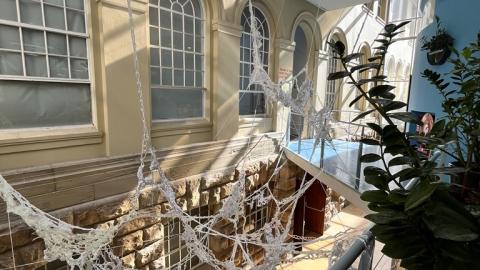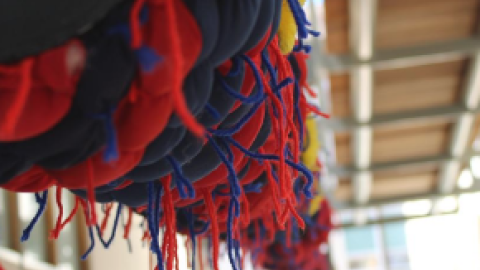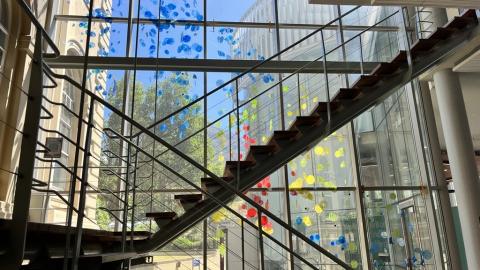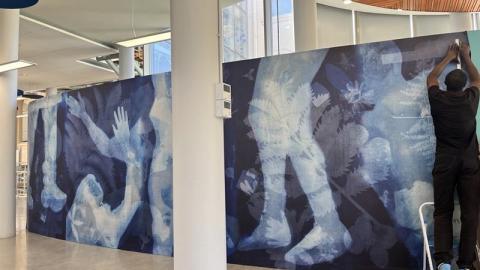Bridging Science and Art: IDM × Michaelis Collaboration Inspires Creative Reflections on Research
The Institute of Infectious Disease and Molecular Medicine (IDM) recently partnered with the Michaelis School of Fine Art for a unique collaboration that brought science and art into conversation. Under the guidance of Professor Fritha Langerman, third-year Michaelis students enrolled in a curatorship elective worked closely with IDM researchers and technology platforms to explore the intersections of scientific discovery, visual representation, and creative expression.
The programme began with an immersive day of learning about the IDM, featuring a series of talks designed to introduce the students to the institute’s people, purpose, and values. Yulisha Naidoo (Research Visibility Officer) presented an overview titled What is the IDM?, followed by a session on Sustainability in Science led by Selisha Naidoo (Research Infrastructure and Compliance Specialist). The day concluded with a thought-provoking talk on Imagery in Science by Dr Esmita Charani (Associate Professor, Department of Medicine), exploring how visual language shapes the way we communicate research and its impact.
The following day, the art students were introduced to both the people and technologies that drive scientific discovery at the IDM. They met two IDM Fellows, Dr Katherine Gill from the Desmond Tutu Health Foundation (DTHF) and Dr John Woodland from the Holistic Drug Discovery and Development Centre (H3D) They also engaged with to two of IDM’s advanced technology platforms, namely the Flow Cytometry and Cell Sorting Platform and the Molecular Phenotyping Platform (D-CYPHR).
Katherine Gill, a clinician-scientist focusing on adolescent health and HIV prevention, shared insights into her work developing new prevention tools and contributing to global HIV policy. John Woodland, a chemical scientist tackling infectious diseases like malaria through molecular design and medicinal chemistry, explained how medicines are discovered, and how the path from idea to treatment is rarely straightforward.
To give students a closer look at the technologies behind this research, Tim Reid and Rozanne Adams from the Flow Cytometry and Cell Sorting Platform demonstrated the instruments used to analyse and sort cells, including a live display of the laser systems. From the Molecular Phenotyping Platform, Liam Bell (D-CYPHR) introduced the world of proteins and explained how these molecular signatures help scientists uncover the inner workings of biological systems.
Following these immersive sessions, students had the privilege of visiting IDM’s research spaces, stepping directly into the environments where the science happens. They drew on these experiences to create a collection of artworks that interpret and respond to the scientific stories, materials, and ideas they encountered.
The resulting works are a vibrant reflection of what happens when art and science converge revealing not only the beauty of scientific discovery but also its profound human and environmental context.
As Professor Langerman reflected, this collaboration exemplifies how interdisciplinary engagement can spark new ways of seeing and understanding complex worlds. For the IDM, it also represents an invitation; to communicate science beyond traditional boundaries and to celebrate creativity as an essential part of discovery.
Artists' statements

A series of knots

The Things We Carry


